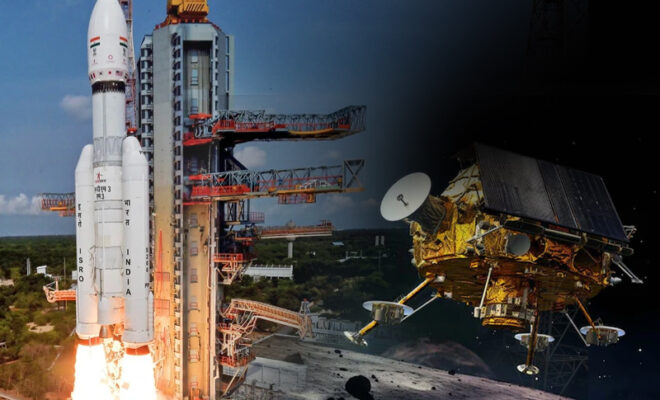Chandrayaan 3: India’s New Step Towards Moon

The launch of Chandrayaan-3 by ISRO is anticipated between July 13 and July 19.
At the Satish Dhawan Space Centre in Sriharikota on July 5, India’s top space agency finished mating the Chandrayaan-3 orbiter with the LVM3 launch vehicle in preparation for liftoff.
More about India’s Chandrayaan 3-
India’s third lunar mission, which cost about 615 crores to build, aims to land the lander successfully on the moon’s surface and then send out a rover to conduct various experiments.
To investigate the lunar surface plasma environment, elemental composition, seismicity, and thermophysical properties, the Chandrayaan-3 mission will transport scientific instruments to the moon. The Chandrayaan-3 spacecraft successfully finished the crucial tests required to confirm its ability to withstand the severe vibration and acoustic vibration that it will experience during launch in March.
The Chandrayaan-3 mission is the follow-up to Chandrayaan-2, which was launched on July 22, 2019, and spent 48 days traveling to the moon. Vikram, a lunar lander, crashed on the moon’s surface on September 6, 2019, ending the mission.
In comparison to the previous lander used in the Chandrayaan-2 mission, the one being used for the Chandrayaan-3 mission has undergone several changes. The new lander will now only have four motors instead of five, and some software modifications have also been made. It is not yet known if ISRO will keep the names Vikram and Pragyan for the previous lander and rover.
The payload for Chandrayaan-3’s Spectro-polarimetry of Habitable Planet Earth (SHAPE) instrument is a significant upgrade. The tools’ purpose is to analyze spectral and polarimetric readings of Earth taken from the lunar orbit.
Also Read:- PM Modi To Launch ₹50,000 Crore Projects In 4 States This Weekend
According to reports, ISRO has identified three critical goals for the Chandrayaan-3 mission. These goals include accomplishing a safe and gentle landing on the Moon, displaying the rover’s mobility on the lunar surface, and performing on-site scientific observations.



